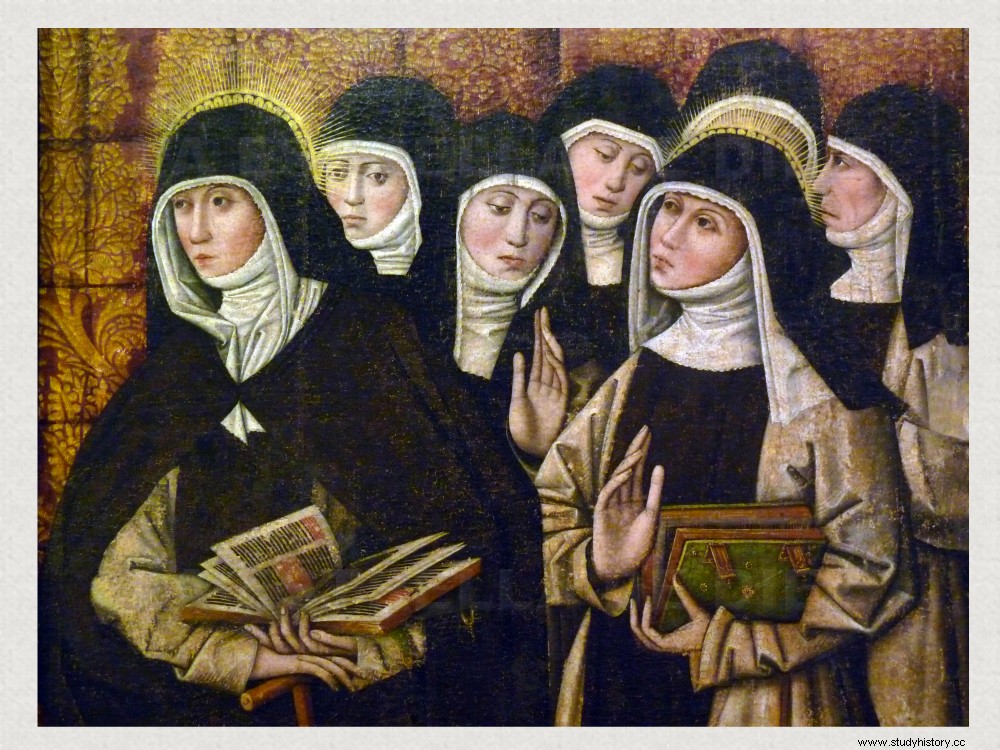For centuries, the only two worthy roles that a woman could play were that of wife, and implicitly mother, or that of nun. Her parents or guardians, family circumstances or simply economic issues, determined that women consecrate their lives to their husbands or to God. And both elections involved an economic outlay. Regardless of social status, the woman who wanted to marry had to contribute a dowry that she would receive and administer to her husband. The meaning of this "payment" differs from one author to another, ranging from those who affirm that it is a kind of insurance to avoid repudiation -in this case the husband should return the dowry-, to those who affirm that it is a compensation that the husband receives for the economic burden of the wife and future children. All the versions of the reason for the dowry imply the condition of inferiority of the woman and even being an object of marketing. Likewise, the amount of the dowry was important and conditioned the power to reach an agreement between the parents of the contracting parties, and, logically, to achieve a better marriage -socially speaking-. So that the economic burden would not leave the family coffers trembling at the time of the wedding, the Republic of Florence established in 1425 a public fund called Monte delle doti where parents were making contributions since their daughters were five years old for the future dowry. Special mention in this section deserves Pope Urban VII who, in addition to having the sad record of being the one who has lasted the shortest time in office -from September 15 to 27, 1590-, had the detail of ordering that when all his assets were donated to the charitable association Archcofradía de la Anunciación to provide dowries for girls from poor families.

And as I told you at the beginning, devoting oneself to religious life also had its cost. Although much less than dowry, most orders also required a financial amount to accept teenage girls. Most of the female convents did not have their own means of subsistence and lived on donations from third parties (properties left in inheritance by the parishioners, donations “pro anima ” -for the salvation of the souls of the donor or a family member-, payments for being buried in the convent grounds…) and the contributions made by the new nuns. In this way, it was also avoided that many creatures were abandoned at the doors of the convents so that the nuns could raise them. Therefore, and due to this registration canon, it is not surprising that the majority of nuns in the Middle Ages were daughters of nobles or wealthy families, and that religious life was not an option to get out of poverty.
